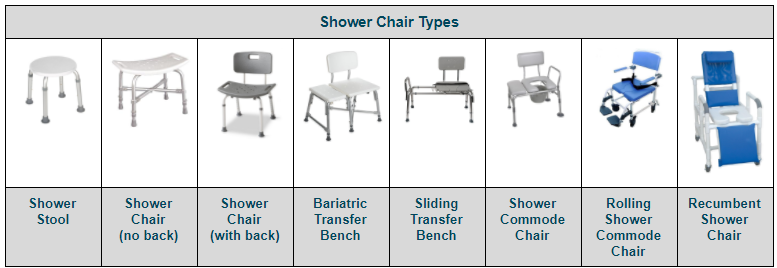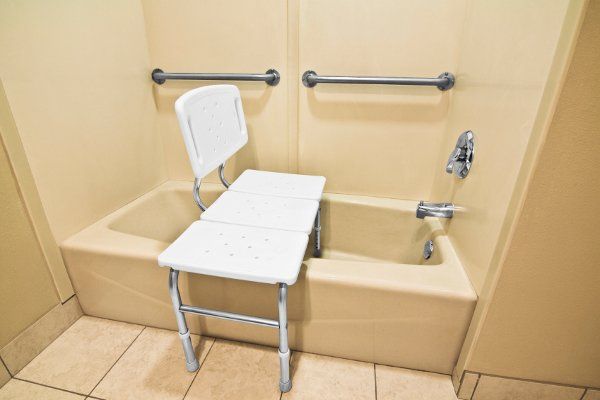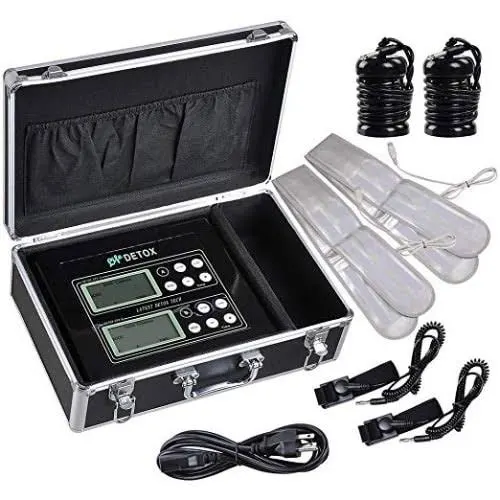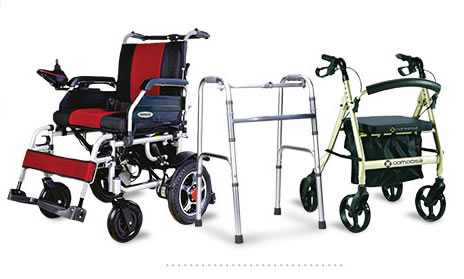
Mobility Products Available in Nigeria
July 19, 2021
Best Foot Detox Machine in Nigeria
August 8, 2022SHOWER CHAIR: Types, Uses, Prices in Nigeria

What is a Shower Chair?
A shower chair or bath chair is typically a four-legged chair with rubberized feet, usually made with aluminum legs and a durable, plastic seat (some models also have chair backs), used to provide additional support in the bath or shower, and make it easier for the elderly, or people who have mobility issues to get in and out of the bath or shower. The chairs usually have rubber or suction cups on the bottom of the legs to keep them from sliding. A shower chair can be useful for people who can’t stand for a long time because it allows you to sit down while showering.
Shower Chair Uses:
As its name implies, this is a highly-specialized type of seating. Its design is optimized for use in the bath or shower, providing users with limited mobility a greater degree of independence. Its main aim is to help reduce the risk of slips and falls while bathing. They are used to facilitate transferring a person from a wheelchair and into the shower chair. This added piece of equipment is not always required, of course, depending on the mobility of the user in question.
Types of Shower Chair
Shower stools –armless and backless round seating solution generally made for smaller bathing areas. They are available in styles to fit nearly all sizes of people (standard to bariatric).
Shower chair (no back) – armless and backless seating solution that is usually rectangular in shape with smoother sides to fit most bathing areas. They are available in styles to fit nearly all sizes of people (standard to bariatric).
Shower chair (with back) –can be armless but provided with back support to provide extra stability during sitting, rising and bathing activities. Some chairs have the option to remove the back piece. They are available in styles to fit nearly all sizes of people (standard to bariatric).
Transfer bench – designed to sit partially outside the tub for those needing assistance sitting outside the tub and sliding over into the washing area. They are heavier than stools and would like be a more permanent solution in your tub or shower. They are available in styles to fit nearly all sizes of people (standard to bariatric).
Sliding transfer bench – same concept as the transfer bench except the person does not have to scoot over in the seat. A release mechanism allows the person to slide over in a seated position. They are available in styles to fit nearly all sizes of people (standard to bariatric).
Shower commode chair – designed for ambulatory people who need toilet support in the shower. It can also serve as easier access to washing lower areas with an opening in the seating area.
Rolling shower commode chair – designed for those not ambulatory and can be wheeled directly into and out of the shower. The chair is waterproof with toileting capabilities. Caregivers can easily work around patient meeting their personal hygiene needs.

How to choose the best bath chair or transfer bench that suits you
The worst thing you can do is not spend the time to evaluate your personal needs and comforts along with the tub or shower situation where you need to use it. Do not force a chair or bench to fit in your space. Do not alter the chair or bench to fit the space either. Not only will it void the manufacturer’s warranty, but it may create an unsafe seating solution.
If you are a larger person don’t choose a small stool even if it is rated at your weight. You should not purchase a seating solution when you are very near or at the stated weight limit of the chair. You need to account for shifts in your weight and body as you shower. It’s your bath time. Make sure you are safe and comfortable with your choice!
In the long run a good bath seat can:
- save you a ton of money by reducing falls and trips in and out of the tub or shower resulting in hospital visits;
- allow your caregivers a safer and easier way to help you bathe,
- give your loved ones peace of mind knowing you have a safe, reliable and easy to use solution for accomplishing your routine tasks, and
- further elevate your level of dependence.
How to use a shower chair
A shower chair doesn’t need to be installed. To use it, just place it in the shower. If it has suction cups, make sure they stick to the shower floor before you use the chair.
Transfer Tub Benches

A transfer tub bench is a seat used to help you move in and out of your shower or bathtub safely and easily (see Figure 5). It’s helpful for people who may have trouble lifting their legs to step over the tub. The bench has rubber caps or suction cups at the bottom of each leg to keep it from moving in the tub.
How to use a transfer tub bench
To use your transfer tub bench, put it in the tub so that 2 legs go inside the tub and 2 legs stay outside the tub (see Figure 6). Place the bench so that a little more than half of it is in the tub. Check to see that each leg is held in place so that your bench doesn’t slide. Be sure to leave enough space in front of the bench for your legs.



